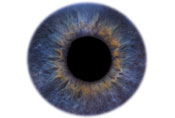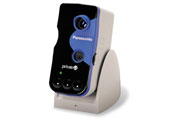Difference between revisions of "Ashwina Soekhoe"
| Line 24: | Line 24: | ||
== The Product == | == The Product == | ||
[[Image:iris_scanner2.jpg]] | |||
<table align="top"><tr><td> | |||
[[Image:iris_scanner2.jpg]]</td></tr> | |||
<tr><td valign="top"><b><i>Panasonic’s Authenticam™, <br> developed with Iridian <br> Technologies, is an iris- <br> scanning PC peripheral, which doubles as a camera. It can be <br> used for video conferencing and <br> online collaboration. (Credit: <br> Iridian Technologies)</i></b></td></tr></table> | |||
== Current Use == | == Current Use == | ||
Revision as of 15:27, 21 March 2006
Work in progress....
Product of the future: Iris Scanner - Identification Tool
 |
| Identification through Iris Scanning |
Intoduction
The Product
Current Use
Future Perspectives
According to Lina Page, Director of Marketing for Iridian Technologies, "Iris-recognition success stories include restricted-access solutions in airports and nuclear power plants, and work is underway to implement the technology at border crossings and customs checkpoints. Your iris is already your passport in the Netherlands and Canada, where trusted travelers can bypass lengthy customs and immigration lines by enrolling in a fastpass program for a small fee. And Japan is testing iris recognition in airline ticket kiosks." Future developments might lead iris recognition into shopping malls, ATMs, maybe even the local convenience store. "Eye-d?"
Science meets the silver screen
Eye-scan identification is the biometric technology most lauded by Hollywood. But, as David Johnston, VP of Marketing at LG Electronics, points out "Hollywood depictions are more than a little fanciful. Instances of circumventing the technology by etched contact lenses and enucleated eyeballs (though visually interesting plot enhancements that make good theater) misrepresent the robustness of the technology. There are complex countermeasures inherent in the design of the systems, and progress on new generations of anti-tamper deterrents is a major part of product development by the real players in the sector."
Science reality Unlike the systems in filmic portrayals of the technology, iris-recognition products use digitized representations of images from near-ordinary video cameras. Laser-scanning devices are non-existent. In most iris-scanning systems on the market, specialized detectors sensing only infrared light are used. Iris-recognizing security systems know to automatically image and authenticate users who place their eyes in the correct position. Colored lights are sometimes used to guide a person to the camera's sweet spot. Top-end systems can accommodate users wearing eyeglasses, contacts, or sunglasses. The technology can be used to log a person onto a workstation or as a checkpoint for physical access to a secure area.

